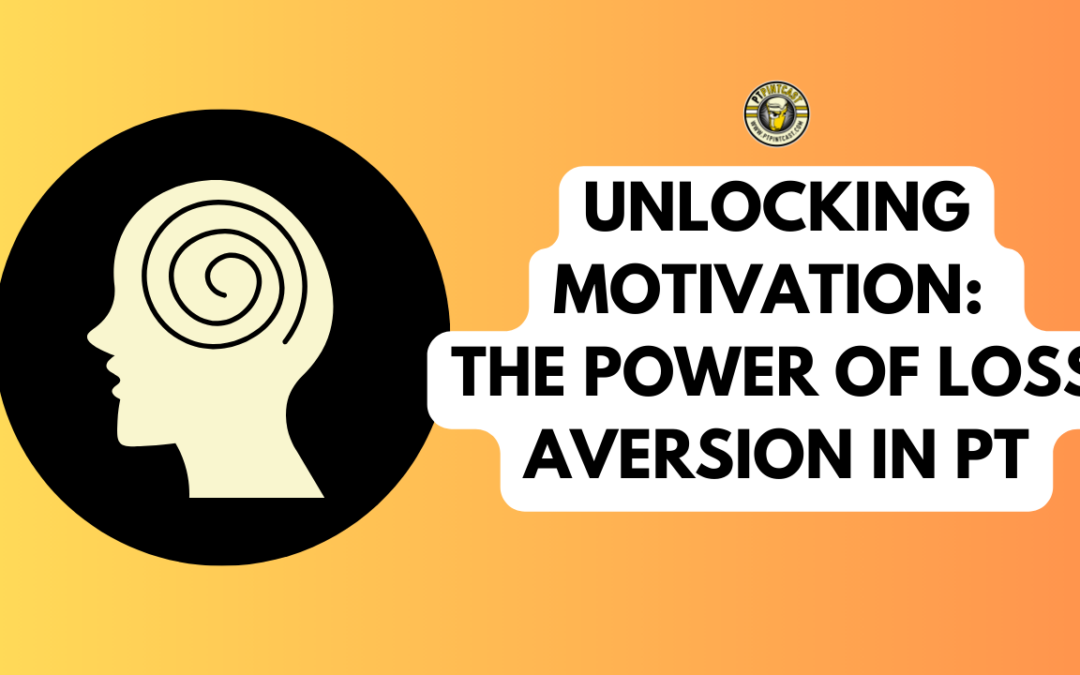In the intricate dance of patient recovery, every step forward is a victory, but every stumble feels like a marathon setback. But what if the emotional weight we place on losses, compared to gains, isn’t just a personal quirk but a deeply ingrained psychological mechanism? Dive into the psychological concept of loss aversion and discover how this ancient survival instinct can be your secret weapon in motivating patients. By the end of this read, you’ll not only gain a fresh perspective on patient behavior but also arm yourself with strategies to supercharge their rehabilitation journey.
What is loss aversion?
Imagine you’re at a casino, standing before a gleaming slot machine. You put in a dollar and—jackpot!—you win $20. The lights flash, the bells ring, and you feel like a rockstar. Now, fast-forward to the next day. You’re back at the casino, but this time, you lose $20. Ouch, right? You’re not just a little upset; you’re devastated.
Welcome to the rollercoaster ride that is loss aversion. Simply put, losses hurt you more than equivalent gains make you happy. That $20 you lost feels like a punch in the gut, even if you won $20 just a day earlier. The pleasure of winning is dwarfed by the agony of loss. Why? Because deep within the crannies of our caveman brains, we’re wired to prioritize survival. In prehistoric times, losing resources like food or shelter could mean life or death. Our brain treats loss like a looming predator—it activates our fight-or-flight response, creating an emotional tempest that eclipses the quieter joy of a gain.
You see, our brains have evolved, but they’re still holding onto old tickets for a show that’s moved on. In today’s world, losing $20 isn’t going to endanger our survival, but try telling that to your adrenaline-pumping, cortisol-releasing brain.
So the next time you’re irrationally upset over a minor loss, remember: it’s not you; it’s millions of years of evolutionary psychology ringing the alarm bells. And while you’re at it, maybe take a moment to celebrate those small wins. Because if you’re always looking out for what you might lose, you’ll miss the joy in what you’ve gained.
Now that you understand loss aversion, how can you use this for good?
Loss Aversion & Physical Therapy: A Dance of Motivation
Imagine you’re a patient, recovering from a sports injury. Your physical therapist (PT) sets milestones for you, and each time you reach one, you feel a surge of accomplishment. But then, there’s that one exercise you just can’t seem to master. Every time you fall short, that disappointment feels ten times worse than the joy of hitting previous targets.
This is loss aversion in action, but how can PTs harness this to enhance patient recovery?
- Set Realistic Goals: Physical therapists can frame their goals and interventions in a way that considers the patient’s fear of regression. Instead of focusing solely on gains (e.g., “you’ll be able to walk 10 more steps tomorrow”), also emphasize the prevention of losses (e.g., “this will ensure you won’t lose the progress we’ve made so far”).
- Feedback is Key: When giving feedback, it’s essential to balance praise for accomplishments with gentle reminders of how much harder it might be to regain lost ground. If a patient is skipping exercises or not following through with recommendations, highlight not just the benefits of compliance but the potential setbacks of non-compliance.
- Empathetic Communication: PTs should acknowledge the emotional weight that patients might place on perceived ‘setbacks’ in their recovery journey. By recognizing and validating these feelings, you can help patients process their emotions and stay motivated.
- Utilize Comparative Progress: Sometimes, showing patients where they started compared to where they are now can mitigate feelings of loss. Regularly revisiting a patient’s progress chart and emphasizing the losses they’ve already overcome can be a powerful motivator.
- Harness the Power of Group Therapy: Group settings can be beneficial. When patients see peers struggling or regressing, it can trigger their loss aversion response, making them more proactive in their rehabilitation.
- Celebrate Small Wins, Anticipate Setbacks: Ensure that every win, no matter how small, is celebrated. But also prepare patients for potential future setbacks. This balance helps manage their expectations and primes them for the ups and downs of recovery.
In essence, for physical therapists, understanding the weight of loss aversion means having another tool in the toolkit. By framing therapy through the lens of avoiding loss as much as achieving gains, PTs can tap into a deep-seated human instinct, driving motivation and commitment in their patients.
And always remember, in the dance of recovery, sometimes it’s the steps backward that propel us forward. Physical therapy isn’t just about healing the body; it’s also about understanding the mind’s intricate plays. By weaving in the lessons of loss aversion, PTs can choreograph a recovery journey that’s not just effective but also deeply empathetic.
Learn More
Here’s another article we wrote on the concept of Scale Perception

